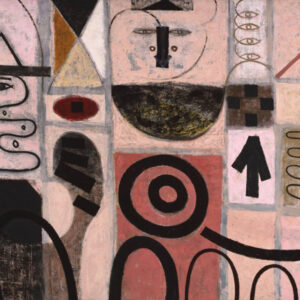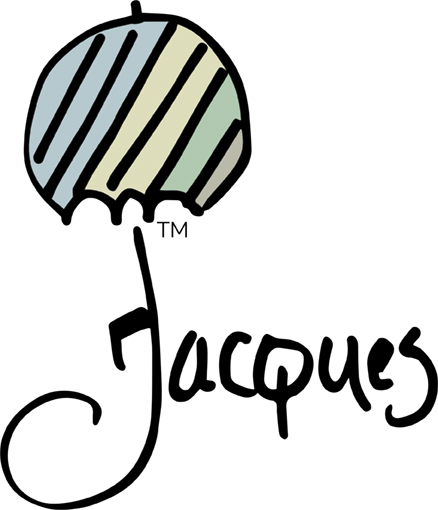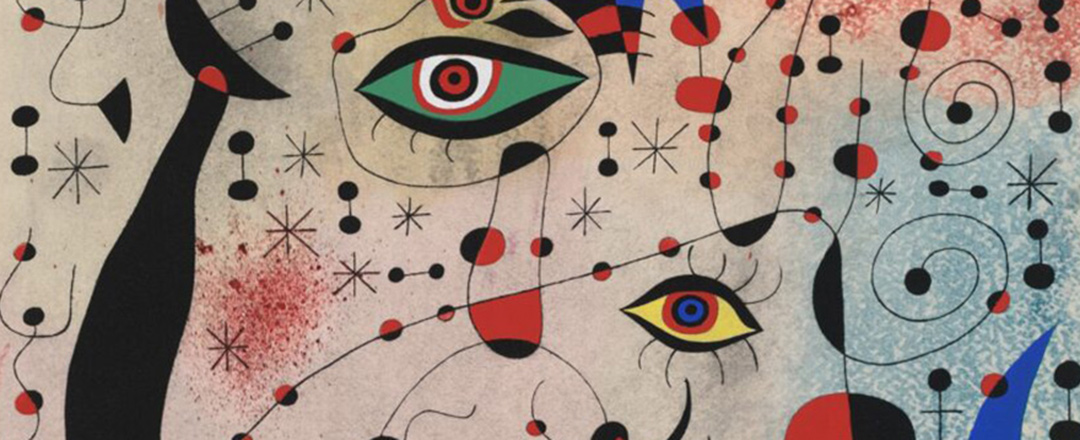“The longer you look at an object, the more abstract it becomes, and, ironically, the more real.”
Lucian Freud
 Art in Context: “Abstract Art – Looking at Famous Abstract Art and its Artists” [*]
Art in Context: “Abstract Art – Looking at Famous Abstract Art and its Artists” [*]
“An Introduction to Abstract Art: When thinking about Abstract Art, a common question pops up: “What is Abstract Art?”. It is quite a broad topic and includes a wide selection of famous abstract art and artists, but again, we ask, “What is Abstract Art really?”. To answer this question, we need to mention early cave paintings and more modern abstract art from the 1900s.
Abstract Art goes all the way back to early cave paintings, when the natural and cosmic worlds were portrayed mostly as expressive lines, forms, and shapes – perhaps meant to be literal representations? However, the question arises as to whether these were meant to be literal portrayals or if there were hidden symbolic meanings related to the spiritual or metaphysical realms. Other earlier representations of abstract art are depicted as decorative forms and shapes on textiles or pottery throughout various cultures.
Although cave art can be named as a form of abstract representation due to its geometric and symbolic nature, the more modern Abstract Art movement is believed to have started during the late 19th and early 20th centuries when other art movements like Impressionism, Post-Impressionism, and Cubism, to name a few, had more prominence in the art world.
The above art movements radically shifted away from the traditional modes of how art was represented, such as the realistic portrayals of various aspects of life and nature. Additionally, these art movements changed the way media was used, such as in paint and sculpture, including the use of artistic principles like perspective and composition.”
*Quotation above is taken directly from the website cited and is the property of that source. It is meant to inform the reader and to give credit where it is due.
 Thought Co.: “Origins and Schools of Abstract Art” [*]
Thought Co.: “Origins and Schools of Abstract Art” [*]
“By Beth Gersh-Nesic Updated on September 03, 2019
Abstract art (sometimes called nonobjective art) is a painting or sculpture that does not depict a person, place, or thing in the natural world. With abstract art, the subject of the work is what you see: color, shapes, brushstrokes, size, scale, and, in some cases, the process itself, as in action painting.
Abstract artists strive to be non-objective and non-representational, allowing the viewer to interpret each artwork’s meaning in their own way. Thus, abstract art is not an exaggerated or distorted view of the world such as we see in the Cubist paintings of Paul Cézanne (1839–1906) and Pablo Picasso (1881–1973), for they present a type of conceptual realism. Instead, form and color become the focus and the subject of the piece.
While some people may argue that abstract art does not require the technical skills of representational art, others would beg to differ. It has, indeed, become one of the major debates in modern art.
Art historians typically identify the early 20th century as an important historical moment in the history of abstract art. During this time, artists worked to create what they defined as “pure art”: creative works that were not grounded in visual perceptions, but in the imagination of the artist. Influential works from this time period include Kandinsky’s 1911 “Picture with a Circle” and “Caoutchouc,” created by the French avant-garde artist Francis Picabia (1879–1953) in 1909.”
*Quotation above is taken directly from the website cited and is the property of that source. It is meant to inform the reader and to give credit where it is due.


